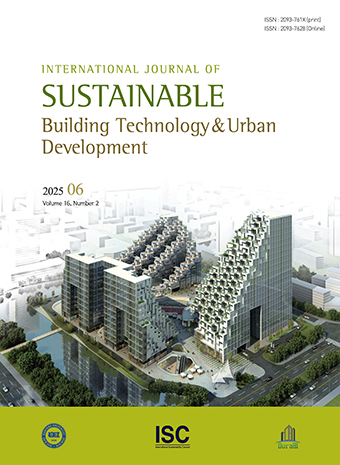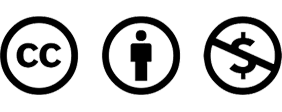General Article
A.C. King, D. Stokols, E. Talen, G.S. Brassington, and R. Killingsworth, Theoretical approaches to the promotion of physical activity: Forging a transdisciplinary paradigm. American Journal of Preventive Medicine. 23(2, Supplement 1) (2002), pp. 15-25.
10.1016/S0749-3797(02)00470-112133734J.L. Nasar, Environmental psychology and urban design. in Companion to urban design. 2011, Routledge. pp. 162-174.
R. Gifford, L. Steg, and J.P. Reser, Environmental psychology. IAAP handbook of applied psychology. (2011), pp. 440-470.
10.1002/9781444395150.ch18F. Lederbogen, P. Kirsch, L. Haddad, F. Streit, H. Tost, P. Schuch, S. Wüst, J.C. Pruessner, M. Rietschel, M. Deuschle, and A. Meyer-Lindenberg, City living and urban upbringing affect neural social stress processing in humans. Nature. 474(7352) (2011), pp. 498-501.
10.1038/nature1019021697947A.M. Weber and J. Trojan, The Restorative Value of the Urban Environment: A Systematic Review of the Existing Literature. Environ Health Insights. 12 (2018), 1178630218812805.
10.1177/117863021881280530505146PMC6256310X. Jin and J. Wang, Assessing Linear Urban Landscape from dynamic visual perception based on urban morphology. Frontiers of Architectural Research. 10(1) (2021), pp. 202-219.
10.1016/j.foar.2021.01.001X. Li, X. Zhang, and T. Jia, Humanization of nature: Testing the influences of urban park characteristics and psychological factors on collegers' perceived restoration. Urban Forestry & Urban Greening. 79 (2023), 127806.
10.1016/j.ufug.2022.127806F. Zhang, B. Zhou, L. Liu, Y. Liu, H.H. Fung, H. Lin, and C. Ratti, Measuring human perceptions of a large-scale urban region using machine learning. Landscape and Urban Planning. 180 (2018), pp. 148-160.
10.1016/j.landurbplan.2018.08.020M. Farahani, S.V. Razavi-Termeh, A. Sadeghi-Niaraki, and S.-M. Choi, People's olfactory perception potential mapping using a machine learning algorithm: A Spatio-temporal approach. Sustainable Cities and Society. 93 (2023), 104472.
10.1016/j.scs.2023.104472J. Olson, L. Daskalska, K. Hoormann, and K. Beyer, Landscape Restructuring in the Shrinking City and Implications for Mental Health, in Handbook of Global Urban Health. 2019, Routledge. pp. 297-314.
10.4324/9781315465456-1931471514M. Knöll, M.H. Miranda, T. Cleff, and A. Rudolph-Cleff, Public Space and Pedestrian Stress Perception: Insights From Darmstadt, Germany, in Handbook of Global Urban Health. 2019, Routledge. pp. 269-282.
10.4324/9781315465456-17L. Tyrväinen, A. Ojala, K. Korpela, T. Lanki, Y. Tsunetsugu, and T. Kagawa, The influence of urban green environments on stress relief measures: A field experiment. Journal of Environmental Psychology. 38 (2014), pp. 1-9.
10.1016/j.jenvp.2013.12.005S.A. Matthews and T.C. Yang, Exploring the role of the built and social neighborhood environment in moderating stress and health. Ann Behav Med. 39(2) (2010), pp. 170-83.
10.1007/s12160-010-9175-720300905PMC4017772A. Birenboim, The influence of urban environments on our subjective momentary experiences. Environment and Planning B: Urban Analytics and City Science. 45(5) (2017), pp. 915-932.
10.1177/2399808317690149K. Mouratidis, Urban planning and quality of life: A review of pathways linking the built environment to subjective well-being. Cities. 115 (2021), 103229.
10.1016/j.cities.2021.103229A.S. Devlin, 1 - Concepts, Theories, and Research Approaches, in Environmental Psychology and Human Well-Being, A.S. Devlin, Editor. 2018, Academic Press. pp. 1-28.
10.1016/B978-0-12-811481-0.00001-930293576PMC6157466I. van Kamp, K. Leidelmeijer, G. Marsman, and A. de Hollander, Urban environmental quality and human well-being: Towards a conceptual framework and demarcation of concepts; a literature study. Landscape and Urban Planning. 65(1) (2003), pp. 5-18.
10.1016/S0169-2046(02)00232-3A. Mondschein and S.T. Moga, New Directions in Cognitive-Environmental Research. Journal of the American Planning Association. 84(3-4) (2018), pp. 263-275.
10.1080/01944363.2018.1526644L. Dang and J. Weiss, Evidence on the Relationship between Place Attachment and Behavioral Intentions between 2010 and 2021: A Systematic Literature Review. Sustainability. 13 (2021), DOI: 10.3390/su132313138.
10.3390/su132313138K.S. Rajoo, D.S. Karam, and M.Z. Abdullah, The physiological and psychosocial effects of forest therapy: A systematic review. Urban Forestry & Urban Greening. 54 (2020), 126744.
10.1016/j.ufug.2020.126744M.H. El-Didy, G.F. Hassan, S. Afifi, and A. Ismail, Crowding between urban planning and environmental psychology: guidelines for bridging the gap. Open House International. 49(4) (2024), pp. 670-695.
10.1108/OHI-06-2023-0146M. Campos Ferreira, P. Dias Costa, D. Abrantes, J. Hora, S. Felício, M. Coimbra, and T. Galvão Dias, Identifying the determinants and understanding their effect on the perception of safety, security, and comfort by pedestrians and cyclists: A systematic review. Transportation Research Part F: Traffic Psychology and Behaviour. 91 (2022), pp. 136-163.
10.1016/j.trf.2022.10.004X. Cheng, J. Liu, H. Liu, and S. Lu, A systematic review of evidence of additional health benefits from forest exposure. Landscape and Urban Planning. 212 (2021), 104123.
10.1016/j.landurbplan.2021.104123T. Gärling, Environmental Psychology: Overview, in International Encyclopedia of the Social & Behavioral Sciences, N.J. Smelser and P.B. Baltes, Editors. 2001, Pergamon: Oxford. pp. 4651-4655.
10.1016/B0-08-043076-7/01372-3R. Kaplan and S. Kaplan, The experience of nature: A psychological perspective. 1989, Cambridge university press.
R.S. Lazarus, Psychological stress and the coping process. Psychological stress and the coping process. 1966, New York, NY, US: McGraw-Hill.
T. Hartig, Restorative environments. Encyclopedia of Applied Psychology. 3 (2004), pp. 273-279.
10.1016/B0-12-657410-3/00821-7I. Knez, S. Thorsson, I. Eliasson, and F. Lindberg, Psychological mechanisms in outdoor place and weather assessment: towards a conceptual model. Int J Biometeorol. 53(1) (2009), pp. 101-11.
10.1007/s00484-008-0194-z19034531S. Landschoot, R. Zustovi, K. Dewitte, N.P. Randall, S. Maenhout, and G. Haesaert, Cereal-legume intercropping: a smart review using topic modelling. Frontiers in Plant Science. 14 (2024).
10.3389/fpls.2023.122885038259927PMC10800527S. Bird, E. Klein, and E. Loper, Natural language processing with Python: analyzing text with the natural language toolkit. 2009, O'Reilly Media, Inc.
D.M. Blei, A.Y. Ng, and M.I. Jordan, Latent dirichlet allocation. Journal of machine Learning research. 3(Jan) (2003), pp. 993-1022.
J.H. Lee and M.J. Ostwald, Latent Dirichlet Allocation (LDA) topic models for Space Syntax studies on spatial experience. City, Territory and Architecture. 11(1) (2024), 3.
10.1186/s40410-023-00223-3C.B. Asmussen and C. Møller, Smart literature review: a practical topic modelling approach to exploratory literature review. Journal of Big Data. 6(1) (2019), 93.
10.1186/s40537-019-0255-7A. Bornioli and M. Subiza-Pérez, Restorative urban environments for healthy cities: a theoretical model for the study of restorative experiences in urban built settings. Landscape Research. 48 (2022), pp. 1-12.
10.1080/01426397.2022.2124962J. Roe and L. McCay, Restorative cities: Urban design for mental health and wellbeing. 2021, Bloomsbury Publishing.
10.5040/9781350112919A. Olszewska-Guizzo, P. Farinha-Marques, R. Ryan, and F. Barbosa, What makes a landscape contemplative? Environment and Planning B: Planning and Design. 45 (2016).
10.1177/0265813516660716I. Eliasson, I. Knez, U. Westerberg, S. Thorsson, and F. Lindberg, Climate and behaviour in a Nordic city. Landscape and Urban Planning. 82(1-2) (2007), pp. 72-84.
10.1016/j.landurbplan.2007.01.020S. Yang, G. Dane, P. van den Berg, and T. Arentze, Influences of cognitive appraisal and individual characteristics on citizens' perception and emotion in urban environment: Model development and virtual reality experiment. Journal of Environmental Psychology. 96 (2024).
10.1016/j.jenvp.2024.102309C. Wu, J. Cui, X. Xu, and D. Song, The influence of virtual environment on thermal perception: physical reaction and subjective thermal perception on outdoor scenarios in virtual reality. Int J Biometeorol. 67(8) (2023), pp. 1291-1301.
10.1007/s00484-023-02495-337414908G. Molina, M. Donn, M.-l. Johnstone, and C. MacGregor, The feeling of comfort in residential settings II: a quantitative model. Buildings and Cities. 4(1) (2023), pp. 441-456.
10.5334/bc.323G.W. Evans, The built environment and mental health. Journal of Urban Health. 80(4) (2003), pp. 536-555.
10.1093/jurban/jtg06314709704PMC3456225L. Gillerot, K. Rozario, P. de Frenne, R. Oh, Q. Ponette, A. Bonn, W. Chow, D. Godbold, M. Steinparzer, D. Haluza, D. Landuyt, B. Muys, and K. Verheyen, Forests are chill: The interplay between thermal comfort and mental wellbeing. Landscape and Urban Planning. 242 (2024).
10.1016/j.landurbplan.2023.104933S.-H. Hung and C.-Y. Chang, Designing for harmony in urban green space: Linking the concepts of biophilic design, environmental Qi, restorative environment, and landscape preference. Journal of Environmental Psychology. 96 (2024).
10.1016/j.jenvp.2024.102294Y. Yin, Y. Shao, Y. Meng, and Y. Hao, The effects of the natural visual-aural attributes of urban green spaces on human behavior and emotional response. Front Psychol. 14 (2023), 1186806.
10.3389/fpsyg.2023.118680637564319PMC10411191S. Azma and R. Katanchi, The Effect of Landscaping and Building Facades on Perceptual-Behavioral Features of Citizens. Journal of History Culture and Art Research. 6(3) (2017).
10.7596/taksad.v6i3.890G. Rybarczyk, A. Ozbil, E. Andresen, and Z. Hayes, Physiological responses to urban design during bicycling: A naturalistic investigation. Transportation Research Part F: Traffic Psychology and Behaviour. 68 (2020), pp. 79-93.
10.1016/j.trf.2019.12.001P.J. Lindal and T. Hartig, Architectural variation, building height, and the restorative quality of urban residential streetscapes. Journal of Environmental Psychology. 33 (2013), pp. 26-36.
10.1016/j.jenvp.2012.09.003H. Kim, Walkable urban configurations: A comprehensive typology and analysis of built environment factors influencing pedestrian activity. International Journal of Sustainable Building Technology and Urban Development. 15(1) (2024), pp. 57-67.
M. Subiza-Pérez, L. Vozmediano, and C. San Juan, Welcome to your plaza: Assessing the restorative potential of urban squares through survey and objective evaluation methods. Cities. 100 (2020).
10.1016/j.cities.2019.102461O. Baumann and B. Brooks-Cederqvist, Multimodal assessment of effects of urban environments on psychological wellbeing. Heliyon. 9(6) (2023), e16433.
10.1016/j.heliyon.2023.e1643337251474PMC10220363A. Lis, K. Zalewska, P. Iwankowski, K. Betkier, P. Bilska, V. Dudar, and A. Łągiewka, Evaluation of sense of safety and privacy in parks in relation to the topography, the presence of dense vegetation and other people in the area. Landscape and Urban Planning. 242 (2024).
10.1016/j.landurbplan.2023.104948B.E.A. Piga, N. Rainisio, G. Stancato, and M. Boffi, Mapping the In-Motion Emotional Urban Experiences: An Evidence-Based Method. Sustainability. 15(10) (2023).
10.3390/su15107963M. Johansson, E. Pedersen, P. Maleetipwan-Mattsson, L. Kuhn, and T. Laike, Perceived outdoor lighting quality (POLQ): A lighting assessment tool. Journal of Environmental Psychology. 39 (2014), pp. 14-21.
10.1016/j.jenvp.2013.12.002X. Hao, X. Zhang, J. Du, M. Wang, and Y. Zhang, Pedestrians' psychological preferences for urban street lighting with different color temperatures. Front Psychol. 13 (2022), 971700.
10.3389/fpsyg.2022.97170036248443PMC9561919C. Burattini, F. Bisegna, and L. De Santoli, Street luminance and night-time walking comfort: a new perspective for the urban lighting design. Journal of Urban Design. (2024). pp. 1-19.
10.1080/13574809.2024.2351914C. Zhang, Y. Chen, B.J. Dewancker, C. Shentu, H. Tian, Y. Liu, J. Wan, X. Zhang, and J. Li, Emotional Landscapes in Urban Design: Analyzing Color Emotional Responses of the Elderly to Community Outdoor Spaces in Yi Jie Qu. Buildings. 14(3) (2024).
10.3390/buildings14030793M. Kyttä, M. Kahila, and A. Broberg, Perceived environmental quality as an input to urban infill policy-making. URBAN DESIGN International. 16(1) (2010), pp. 19-35.
10.1057/udi.2010.19J. Van Cauwenberg, V. Van Holle, I. De Bourdeaudhuij, P. Clarys, J. Nasar, J. Salmon, L. Maes, L. Goubert, N. Van de Weghe, and B. Deforche, Physical environmental factors that invite older adults to walk for transportation. Journal of Environmental Psychology. 38 (2014), pp. 94-103.
10.1016/j.jenvp.2013.12.012N. Chen, C.M. Hall, K. Yu, and C. Qian, Environmental Satisfaction, Residential Satisfaction, and Place Attachment: The Cases of Long-Term Residents in Rural and Urban Areas in China. Sustainability. 11(22) (2019).
10.3390/su11226439T. von Wirth, A. Grêt-Regamey, C. Moser, and M. Stauffacher, Exploring the influence of perceived urban change on residents' place attachment. Journal of Environmental Psychology. 46 (2016), pp. 67-82.
10.1016/j.jenvp.2016.03.001A. Kaklauskas, A. Abraham, G. Dzemyda, S. Raslanas, M. Seniut, I. Ubarte, O. Kurasova, A. Binkyte-Veliene, and J. Cerkauskas, Emotional, affective and biometrical states analytics of a built environment. Engineering Applications of Artificial Intelligence. 91 (2020).
10.1016/j.engappai.2020.103621Y. Rofé, Mapping the sense of well being in a neighborhood: survey technique, and analysis of agreement and variation. Planum-European Online Journal of Planning. (2004).
M. Deitz, T. Notley, M. Catanzaro, A. Third, and K. Sandbach, Emotion mapping: Using participatory media to support young people's participation in urban design. Emotion, Space and Society. 28 (2018), pp. 9-17.
10.1016/j.emospa.2018.05.009R. Ho and W.T. Au, Scale Development for Environmental Perception of Public Space. Front Psychol. 11 (2020), 596790.
10.3389/fpsyg.2020.59679033329262PMC7719834J.A. Vallejo-Borda, V. Cantillo, and A. Rodriguez-Valencia, A perception-based cognitive map of the pedestrian perceived quality of service on urban sidewalks. Transportation Research Part F: Traffic Psychology and Behaviour. 73 (2020), pp. 107-118.
10.1016/j.trf.2020.06.013N.S.S. Elrafie, G.F. Hassan, M.A. El Fayoumi, and A. Ismail, Investigating the perceived psychological stress in relevance to urban spaces' different perceived personalities. Ain Shams Engineering Journal. 14(6) (2023), 102116.
10.1016/j.asej.2023.102116R. Rostami, H. Lamit, S.M. Khoshnava, and R. Rostami, Successful public places: A case study of historical Persian gardens. Urban Forestry & Urban Greening. 15 (2016), pp. 211-224.
10.1016/j.ufug.2015.08.011Y. Rofè, The meaning and usefulness of the "feeling map" as a tool in planning and urban design. Pursuit of a living architecture: Continuing Christopher Alexander's quest for a humane and sustainable building culture, (2016), pp. 295-312.
M.A. Gharib, J.A. Golembiewski, and A.A. Moustafa, Mental health and urban design - zoning in on PTSD. Current Psychology. 39(1) (2017), pp. 167-173.
10.1007/s12144-017-9746-xP. He, B. Yu, J. Ma, K. Luo, S. Chen, and Z. Shen, Exploring the non-linear relationship and synergistic effect between urban built environment and public sentiment integrating macro-and micro-level perspective: a case study in San Francisco. Frontiers in Psychology. 15 (2024), pp. 1276923.
10.3389/fpsyg.2024.127692338390408PMC10881791F. Aram, E. Solgi, E. Higueras García, D. Mohammadzadeh, S.A. Mosavi, and S. Shamshirband, Design and Validation of a Computational Program for Analysing Mental Maps: Aram Mental Map Analyzer. Sustainability. 11(14) (2019).
10.3390/su11143790X. Ren, P. Wei, Q. Wang, W. Sun, M. Yuan, S. Shao, D. Zhu, and Y. Xue, The effects of audio-visual perceptual characteristics on environmental health of pedestrian streets with traffic noise: A case study in Dalian, China. Front Psychol. 14 (2023), 1122639.
10.3389/fpsyg.2023.112263937063532PMC10102546N. Shoval, Y. Schvimer, and M. Tamir, Tracking technologies and urban analysis: Adding the emotional dimension. Cities. 72 (2018), pp. 34-42.
10.1016/j.cities.2017.08.005M. Bonaiuto, F. Fornara, S. Alves, I. Ferreira, Y. Mao, E. Moffat, G. Piccinin, and L. Rahimi, Urban environment and well-being: cross-cultural studies on Perceived Residential Environment Quality Indicators (PREQIs). Cogn Process. 16 Suppl 1 (2015), pp. 165-169.
10.1007/s10339-015-0691-z26267118Q.H. Le, N. Kwon, T.H. Nguyen, B. Kim, and Y. Ahn, Sensing Perceived Urban Stress Using Space Syntactical and Urban Building Density Data: A Machine Learning-based Approach. Building and Environment. (2024), pp. 112054.
10.1016/j.buildenv.2024.112054A.L. Alvarez and D. MÜLler-Eie, Quality of Urban Life and Its Relationship to Spatial Conditions, in The Sustainable City XII. (2017). pp. 285-296.
10.2495/SC170251M. Gerus-Gosciewska, Evaluation of urban space in the context of environmental psychology and safety, in The 9th International Conference "Environmental Engineering 2014". (2014).
10.3846/enviro.2014.118D. Suhanova, Conflicting perceptions of the well-organised environment. Landscape architecture and art. 23(23) (2023), pp. 21-27.
10.22616/j.landarchart.2023.23.03Y. Sun, Z. Xu, and J. Zhong, Analysis of Residential User Psychology and Influencing Factors of High-Rise Building Space Design. Reviews of Adhesion and Adhesives. 11(2) (2023).
H.S. Choi, G. Bruyns, T. Cheng, W. Zhang, and S. Sharma, Human cognition and emotions for human-centred design in vertical interior urban spaces. Journal of Urban Design. (2024), pp. 1-24.
10.1080/13574809.2024.2357803A. Irajpour and A. Pandolfi, The Value of Social Integration Tools. A Psychological Intervention on Urban Design in the City of Piacenza. Italian Journal of Planning Practice. 13(1) (2023), pp. 1-23.
B.I. Kochurov, I.V. Ivashkina, N.V. Fomina, and Y.I. Ermakova, Urban Health Approach to the Study and Development of Large Cities. Geography and Natural Resources. 41(3) (2020), pp. 203-210.
10.1134/S1875372841030014K. Samuelsson, The Topodiverse City: Urban Form for Subjective Well-Being. Frontiers in Built Environment. 7 (2021).
10.3389/fbuil.2021.735221K. Bielecka, Assessment of quality of living environment based on interdisciplinary research methods-selected examples. 2019, IOP Publishing.
10.1088/1757-899X/471/7/072035D. Alexander and B. Wydeman, The Intersection and Divergence of New Urbanism and Environmental Psychology: An Exploration. Frontiers in Built Environment. 6 (2020).
10.3389/fbuil.2020.00061I. Erin, A. Araldi, G. Fusco, and E. Cubukcu, Quantitative Methods of Urban Morphology in Urban Design and Environmental Psychology, in Proceedings 24th ISUF 2017 - City and Territory in the Globalization Age. (2017).
10.4995/ISUF2017.2017.5732J. Hollander and V. Foster, Brain responses to architecture and planning: a preliminary neuro-assessment of the pedestrian experience in Boston, Massachusetts. Architectural Science Review. 59(6) (2016), pp. 474-481.
10.1080/00038628.2016.1221499K. Regina de Castro Marins, Comparative assessment of sustainability strategies applied to urban neighbourhoods in Brazil, Germany and Sweden. International Journal of Sustainable Building Technology and Urban Development. 8(2) (2017), pp. 195-207.
10.12972/susb.20170017A. Bigazzi, F. Ausri, L. Peddie, D. Fitch, and E. Puterman, Physiological markers of traffic- related stress during active travel. Transportation Research Part F: Traffic Psychology and Behaviour. 84 (2022), pp. 223-238.
10.1016/j.trf.2021.12.003O.S.O.K. Mingu, The Effect of Noise on Construction Workers' Mental Workload Considering Task Difficulty. 2023 Regular Academic Conference. Korean Institute of Construction Management and Engineering. (2023).
S.P. Choudhury, A. Arora, N. Jain, and S.K. Dey, Climate Change, Urbanisation, and Their Impact on Increased Occurrence of Cardiometabolic Syndrome, in Urban Ecology and Global Climate Change. 2022. p. 30-56.
10.1002/9781119807216.ch2J. Molinsky and A. Forsyth, Climate Change, Aging, and Well-being: How Residential Setting Matters. Housing Policy Debate. 33(5) (2023), pp. 1029-1054.
10.1080/10511482.2022.2109711World Health Organization (WHO), Urban planning, design and management approaches to building resilience - an evidence review: first report on protecting environments and health by building urban resilience. 2022, World Health Organization. Regional Office for Europe: Copenhagen.
Y. Miao, H. Che, S. Liu, and X. Zhang, Heat stress in Beijing and its relationship with boundary layer structure and air pollution. Atmospheric Environment. 282 (2022), 119159.
10.1016/j.atmosenv.2022.119159J.D. Blanco Cadena, G. Salvalai, G. Bernardini, and E. Quagliarini, Determining behavioural-based risk to SLODs of urban public open spaces: Key performance indicators definition and application on established built environment typological scenarios. Sustainable Cities and Society. 95 (2023), 104580.
10.1016/j.scs.2023.104580D.G.C. Rainham and K.E. Smoyer-Tomic, The role of air pollution in the relationship between a heat stress index and human mortality in Toronto. Environmental Research. 93(1) (2003), pp. 9-19.
10.1016/S0013-9351(03)00060-412865043S.J. Jacobs, A.B. Pezza, V. Barras, and J. Bye, A new 'bio-comfort' perspective for Melbourne based on heat stress, air pollution and pollen. International Journal of Biometeorology. 58(2) (2014), pp. 263-275.
10.1007/s00484-013-0636-023404183M. Cetin, Climate comfort depending on different altitudes and land use in the urban areas in Kahramanmaras City. Air Quality, Atmosphere & Health. 13(8) (2020), pp. 991-999.
10.1007/s11869-020-00858-yG.R. Roshan, A.A. Ghanghermeh, and S. Attia, Determining new threshold temperatures for cooling and heating degree day index of different climatic zones of Iran. Renewable Energy. 101 (2017), pp. 156-167.
10.1016/j.renene.2016.08.053J. Lee, Smart city in urban design. International Journal of Sustainable Building Technology and Urban Development. 12(4) (2021), pp. 380-393.
A.P. Silva Gouveia, P. Lena Farias, and P. Souza Gatto, Letters and cities: reading the urban environment with the help of perception theories. Visual Communication. 8(3) (2009), pp. 339-348.
10.1177/1470357209106474A.A. Olszewska, P.F. Marques, R.L. Ryan, and F. Barbosa, What makes a landscape contemplative? Environment and Planning B: Urban Analytics and City Science. 45(1) (2016), pp. 7-25.
10.1177/0265813516660716Z. Chen, S. Schulz, M. Qiu, W. Yang, X. He, Z. Wang, and L. Yang, Assessing affective experience of in-situ environmental walk via wearable biosensors for evidence-based design. Cognitive Systems Research. 52 (2018), pp. 970-977.
10.1016/j.cogsys.2018.09.003M. Rogerson, A. Haines-Delmont, R. McCabe, A. Brown, and R. Whittington, The relationship between inpatient mental health ward design and aggression. Journal of Environmental Psychology. 77(2021).
10.1016/j.jenvp.2021.101670N. Basu, O. Oviedo-Trespalacios, M. King, M. Kamruzzaman, and M.M. Haque, The influence of the built environment on pedestrians' perceptions of attractiveness, safety and security. Transportation Research Part F: Traffic Psychology and Behaviour. 87 (2022), pp. 203-218.
10.1016/j.trf.2022.03.006J. Chen, Y. Jin, and H. Jin, Effects of visual landscape on subjective environmental evaluations in the open spaces of a severe cold city. Front Psychol. 13 (2022), 954402.
10.3389/fpsyg.2022.95440236248581PMC9559619J. van Ameijde, C.Y. Ma, G. Goepel, C. Kirsten, and J. Wong, Data-driven placemaking: Public space canopy design through multi-objective optimisation considering shading, structural and social performance. Frontiers of Architectural Research. 11(2) (2022), pp. 308-323.
10.1016/j.foar.2021.10.007A. Herneoja, E. Ronkko, A. Haapakangas, S. Malve-Ahlroth, E. Oikarinen, and S. Hosio, Interdisciplinary approach to defining outdoor places of knowledge work: quantified photo analysis. Front Psychol. 14 (2023), pp. 1237069.
10.3389/fpsyg.2023.123706938106383PMC10722440G. Molina, M. Donn, M.-l. Johnstone, and C. MacGregor, The feeling of comfort in residential settings I: a qualitative model. Buildings and Cities. 4(1) (2023), pp. 422-440.
10.5334/bc.322L. Zhang and C. Kim, Chromatics in Urban Landscapes: Integrating Interactive Genetic Algorithms for Sustainable Color Design in Marine Cities. Applied Sciences. 13(18) (2023).
10.3390/app131810306J. Chen, B. Wu, K. Dai, and J. Yu, Linking Perceived Biodiversity and Restorative Benefits in Urban Parks through Place Attachment-A Case Study in Fuzhou, China. Diversity. 16(7) (2024).
10.3390/d16070416D. Belanche, L.V. Casaló, and C. Flavián, Understanding the cognitive, affective and evaluative components of social urban identity: Determinants, measurement, and practical consequences. Journal of Environmental Psychology. 50 (2017), pp. 138-153.
10.1016/j.jenvp.2017.02.004H. Eshaghzadeh Torbati, The Role of Environmental Graphic in the Identification of Urban Public Spaces. Civil Engineering Journal. 4(8) (2018).
10.28991/cej-03091129Y.-K. Juan and W.-H. Lin, The relationship between residential burglaries and urban environments in Taipei City: a data mining approach. International Journal of Urban Sciences. 27(1) (2022), pp. 155-177.
10.1080/12265934.2022.2085151J. Yang and C. Yuan, Application of Cognitive System Model and Gestalt Psychology in Residential Healthy Environment Design. Comput Intell Neurosci. 2022 (2022), 5661221.
10.1155/2022/566122136045982PMC9420565M. Faghiholislam, H. Azemati, H. Keshmiri, and S. Pourbagher, Extraction of effective cycles on reducing patients' depression in the design of treatment spaces. Facilities. 42(1/2) (2023), pp. 105-126.
10.1108/F-08-2022-0104- Publisher :Sustainable Building Research Center (ERC) Innovative Durable Building and Infrastructure Research Center
- Publisher(Ko) :건설구조물 내구성혁신 연구센터
- Journal Title :International Journal of Sustainable Building Technology and Urban Development
- Volume : 16
- No :1
- Pages :3-22
- Received Date : 2024-10-02
- Accepted Date : 2024-12-16
- DOI :https://doi.org/10.22712/susb.20250002




 International Journal of Sustainable Building Technology and Urban Development
International Journal of Sustainable Building Technology and Urban Development










